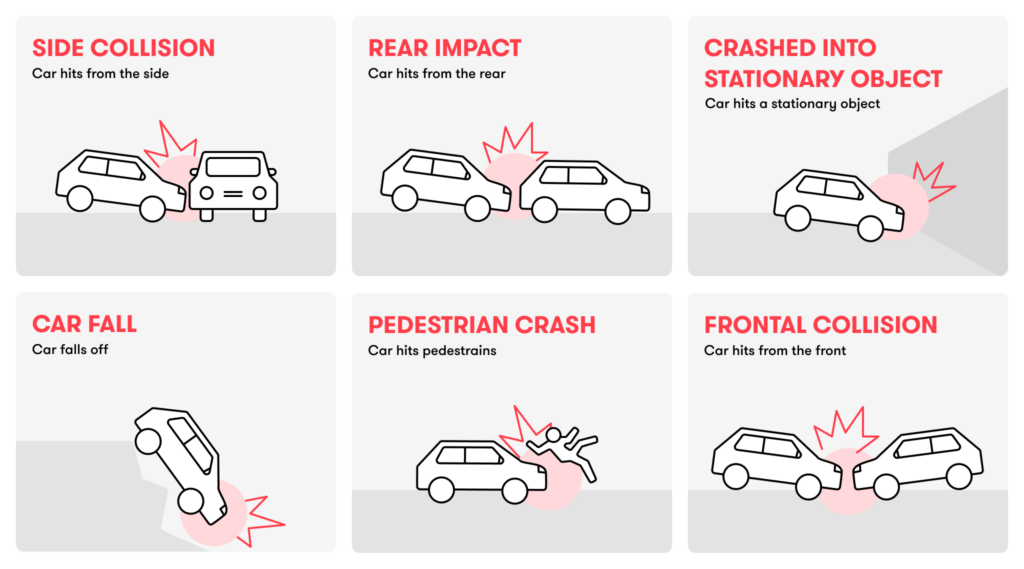
Road safety is an underlooked of workplace health, especially for industries where employees are required to operate company vehicles, operate machinery, or commute for work. Workplace Safety Officers (WSOs) play a crucial role in ensuring employees have the knowledge and resources to practice safe driving habits. By fostering a culture of road safety, businesses can minimise operator related accidents, minimise injuries, and improve overall operational efficiency.
Alarming Trends in Road Safety (2024)
In 2024, there was a significant rise in risky driving behaviors:
- Speeding violations increased by 64.8%
- Speed-related fatal accidents rose by 43.8%
- Drink-driving accidents saw a 9.1% increase
For motorcycle accidents, the top causes include:
- Failure to keep a proper lookout
- Failure to maintain control
- Changing lanes without due care
Additionally, seat belt usage remains a concern:
- 1 in 5 accident victims was not wearing a seatbelt
- 9 in 10 seat belt users sustained less serious injuries
- 50% of backseat passengers did not wear seat belts
Who Is Most Affected?

- Young Drivers & Motorcyclists
- In 2024, motorcyclists and their pillion riders were involved in 55.2% of all traffic accidents and accounted for 59.9% of traffic fatalities.
- Younger drivers often exhibit higher accident rates, attributed to inexperience and a propensity for riskier driving behaviors.
- In 2024, motorcyclists and their pillion riders were involved in 55.2% of all traffic accidents and accounted for 59.9% of traffic fatalities.
- Logistics & Delivery Workers
- Workers in logistics and delivery services spend extended periods on the road, increasing their exposure to potential accidents. Factors such as tight schedules, fatigue, and the pressure to meet delivery deadlines can elevate the risk of road incidents.
- Taxi & Ride-Hailing Drivers
- Drivers in the taxi and ride-hailing industry accumulate high mileage daily, often navigating through congested traffic during peak hours. This raises their likelihood of being involved in traffic accidents.
- Construction & Industrial Workers
- These workers frequently operate heavy vehicles and machinery, both on-site and on public roads. The complexity and size of such equipment can lead to severe accidents, especially if safety guidelines are not strictly followed.
- Elderly Drivers
Elderly individuals face increased risks due to age-related factors:- Drivers: Between 2019 and 2021, 16% of fatal accidents and 16% of accidents with injuries involved vehicle drivers and motorcycle riders aged 65 years or older.

Credit: Coverager
The Importance of Vehicle Safety Ratings
Car safety ratings help assess how well vehicles protect occupants during accidents. Agencies like NHTSA (US) and Euro NCAP (EU) provide 5-star safety ratings based on crash tests that simulate real-world accidents.
- Frontal Impact – 56% of severe injuries occur in head-on collisions. This test evaluates how well the vehicle absorbs impact to protect occupants.
- Lateral/Side Impact – 13% of traffic accidents involve T-bone collisions. Crash dummies are assessed for head, neck, chest, and pelvis protection.
- Rear Impact – 29% of all car accidents are rear-end collisions, often resulting in whiplash injuries. These tests evaluate head and neck movements upon impact.
Why Road Safety Matters in the Workplace?

Road-related accidents can have serious legal, financial, and operational consequences for businesses.
- Reducing Work-Related Driving:
Workplace accidents due to road accidents result in lost workdays and reduced productivity. In 2023, Singapore recorded 12,939 workplace injuries, an increase from the previous year. - Legal Compliance & Workplace Traffic Management:
Singapore’s Workplace Safety and Health (WSH) Act and Road Traffic Act require businesses to ensure employee safety on the road. Companies that fail to comply face penalties, liabilities, and reputational damage. - Protecting Company Assets:
Properly maintained fleets and trained drivers help prevent costly vehicle repairs and insurance claims. The Land Transport Authority (LTA) mandates regular vehicle inspections to ensure roadworthiness, reducing accident risks due to mechanical failures. - Enhancing Employee Well-being:
Employees who feel safe while driving are more focused, productive, and engaged. A strong safety culture reduces stress and improves job satisfaction, leading to lower turnover rates.
Workplace-Specific Road Safety Measures

Since the blog focuses on workplace safety officers, here’s how companies can improve road safety:
- Safe Driving Policies at Work
- Enforce a strict no-phone-use policy while driving
- Limit driving hours to prevent fatigue-related accidents
- Encourage carpooling or shuttle services to reduce congestion and exposure to accidents
- Fleet Management & Safety
- Regular vehicle maintenance checks to ensure brakes, tires, and lights are in good condition
- Use GPS tracking and telematics to monitor driver behavior and prevent reckless driving
- Leverage AI-based accident prevention systems that detect fatigue, lane deviation, and sudden braking
- Workplace Driver Training Programs
- Defensive driving courses to improve awareness and reaction time
- First-aid response training to help drivers manage emergency situations
- Vehicle handling in different weather conditions to prevent skidding and loss of control
Conclusion: Creating a Safer Workplace Through Road Safety
Road safety goes beyond just obeying traffic laws—it’s about fostering a workplace culture that prioritises safety, education, and accountability. By investing in driver training, vehicle maintenance, and proactive safety programs, employers can reduce accidents, protect employees, and improve overall operational efficiency.
A safer workplace starts with safer roads. Connect with us today to explore tailored road safety programs that promote awareness, reduce risks, and enhance workplace safety.



